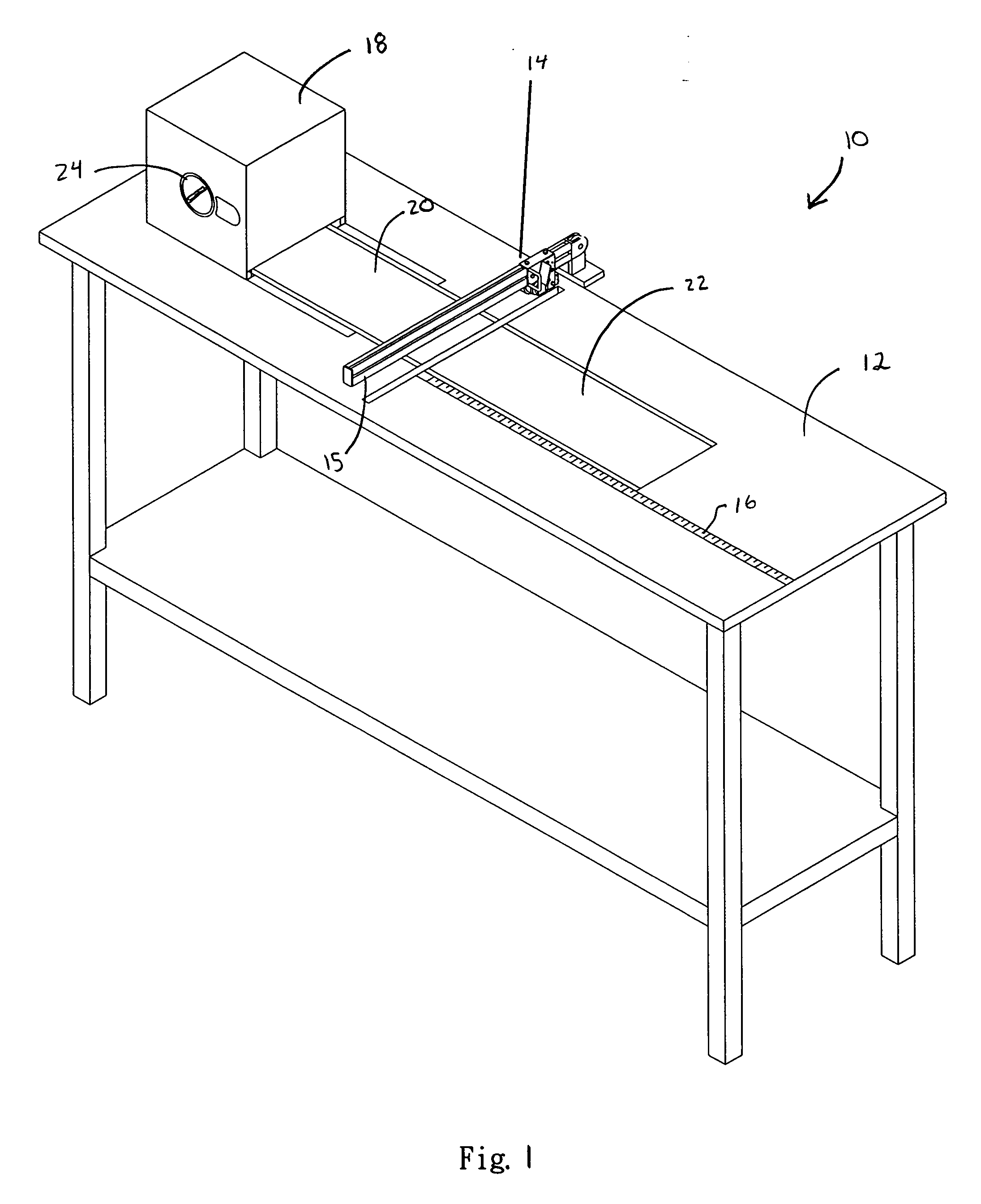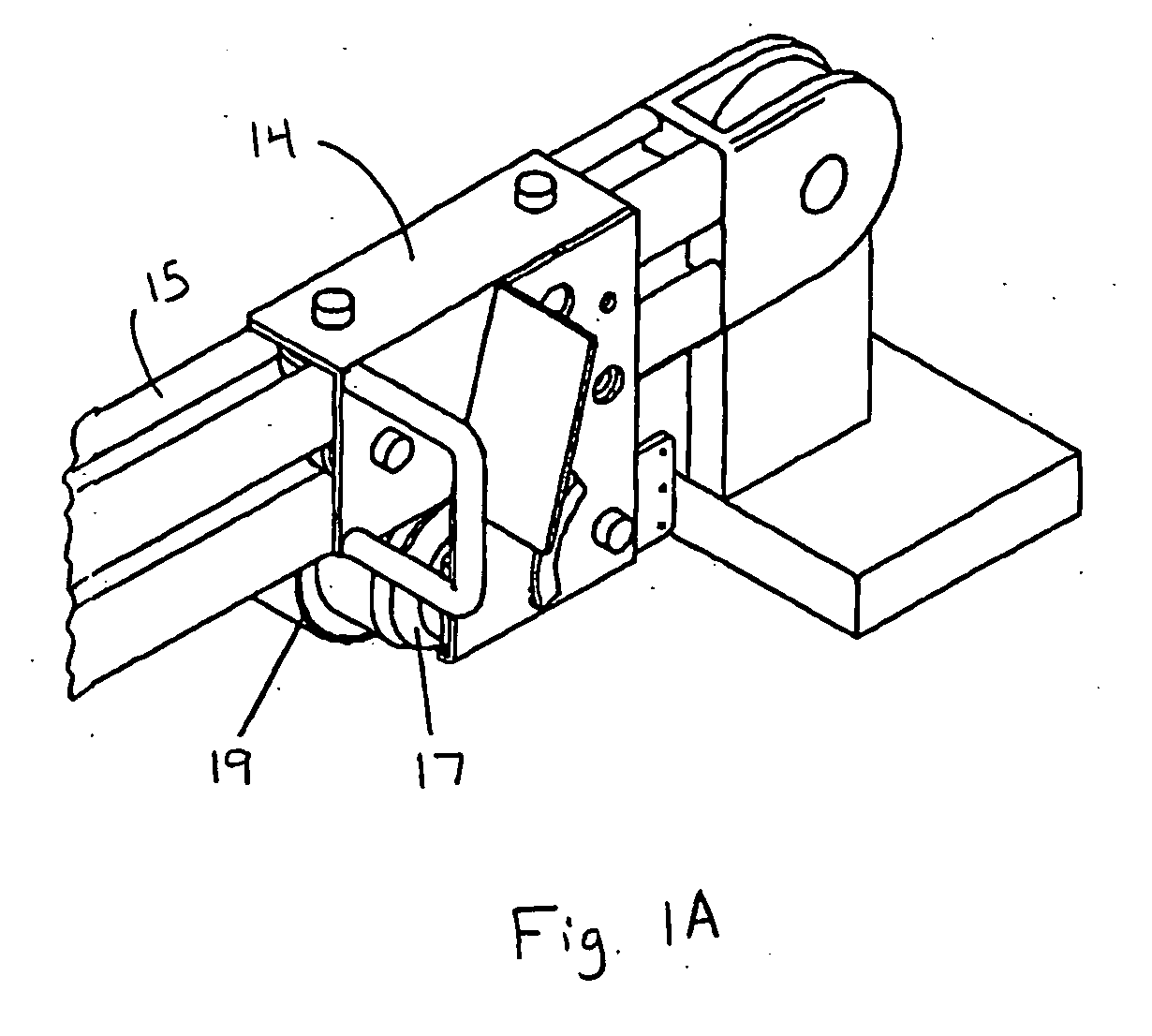Container for fabric roll
a fabric roll and container technology, applied in the direction of thin material handling, metal working apparatus, article delivery, etc., can solve the problems of material unwinding from the roll, and achieve the effects of facilitating cutting, minimizing dirt or dust, and cleaning the cut of certain fabrics
- Summary
- Abstract
- Description
- Claims
- Application Information
AI Technical Summary
Benefits of technology
Problems solved by technology
Method used
Image
Examples
Embodiment Construction
[0021] The invention disclosed herein is susceptible of embodiment in many different forms. Shown in the drawings and described hereinbelow in detail is one preferred embodiment of the invention. It is to be understood, however, that the present disclosure is an exemplification of the principles of the invention and does not limit the invention to the illustrated embodiment.
[0022] A preferred embodiment of a system for customizing fabric panels for construction of window covering is shown in FIG. 1. The system 10 includes a substrate, such as table 12, a cutter 14, a measuring device, such as ruler 16, and a container box 18. Fabric material 20 suitable for constructing panels and rows of a window covering, such as that described in co-pending application Ser. No. 10 / 984,066 is pulled from the container box 18 and is laid on table 12. The ruler 16, which may be integral with the table 12, is positioned with the cutter 14 such that the position of cutter 14 marks a zero point. A des...
PUM
| Property | Measurement | Unit |
|---|---|---|
| length | aaaaa | aaaaa |
| width | aaaaa | aaaaa |
| widths | aaaaa | aaaaa |
Abstract
Description
Claims
Application Information
 Login to View More
Login to View More - R&D
- Intellectual Property
- Life Sciences
- Materials
- Tech Scout
- Unparalleled Data Quality
- Higher Quality Content
- 60% Fewer Hallucinations
Browse by: Latest US Patents, China's latest patents, Technical Efficacy Thesaurus, Application Domain, Technology Topic, Popular Technical Reports.
© 2025 PatSnap. All rights reserved.Legal|Privacy policy|Modern Slavery Act Transparency Statement|Sitemap|About US| Contact US: help@patsnap.com



